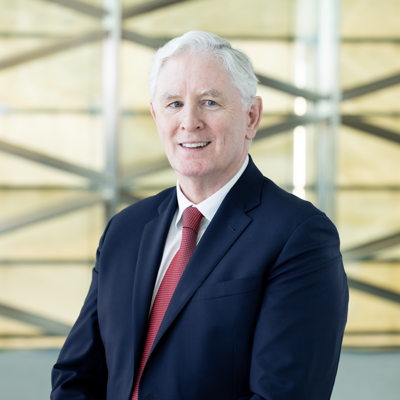
“If you are talented and ambitious and want to join a world-class university with top faculty and facilitiesthat are unparalleled anywhere in the world, KAUST may be the place for you.”
Program Affiliations
Biography
Professor of Mechanical Engineering Brian Moran joined KAUST and the Physical Science and Engineering Division as a founding member in 2008, additionally serving as acting provost throughout the opening of the university in 2009. As Dean of Graduate Affairs from 2008 to 2024, Dr. Moran was instrumental in shaping the institution’s college recruitment and admissions process, alumni engagement and business operations, and creating a nurturing and welcoming environment for students from all countries. Prior to KAUST, he taught at Northwestern University in the USA, where he was chair of civil and environmental engineering and, before that, chair of mechanical engineering. Moran is the author of more than 100 publications and co-author of the book Nonlinear Finite Elements for Continua and Structures, Wiley, NY, 2000. He has been active in professional organizations, including the Society of Engineering Science as secretary and member of the board of directors; and as a fellow of the American Society of Mechanical Engineers.
Research Interests
Dr. Moran’s research interests are in computational methods in engineering and science,continuum mechanics, fracture mechanics, multi-scale modeling of materials, development ofthe natural element method, mechanics of biofilms, mechanics of soft tissue, and compositemechanics. Current and recent projects include: developing multi-resolution continuum modelsfor simulation of fracture processes across several length scales in ductile metal; developingnew large deformation constitutive models for collagen-reinforced soft tissue and extendingconstitutive models to multi-scale formulations; developing asymptotic crack tip fields forcrack/tears in soft tissue; developing combined level set and extended finite element methodsfor the evolution of biofilms without the need for the biofilm surface to coincide with elementboundaries and without the need for element remeshing; extending the method to the case offluid flow around biofilm; and extending the methodology to precipitate evolution in metal alloys.
Education Profile
IBM Research Fellow,California Institute ofTechnology, USA, 1988
Ph.D., Solid Mechanics,Brown University, USA, 1988
M.Sc., Applied Mathematics,Brown University, USA, 1986
M.Eng.Sc., MechanicalEngineering, University ofGalway, Ireland, 1982
B.E., Civil Engineering,University of Galway,Ireland, 1980
Awards and Recognitions
Publications
Research Areas
- Mechanical Engineering

